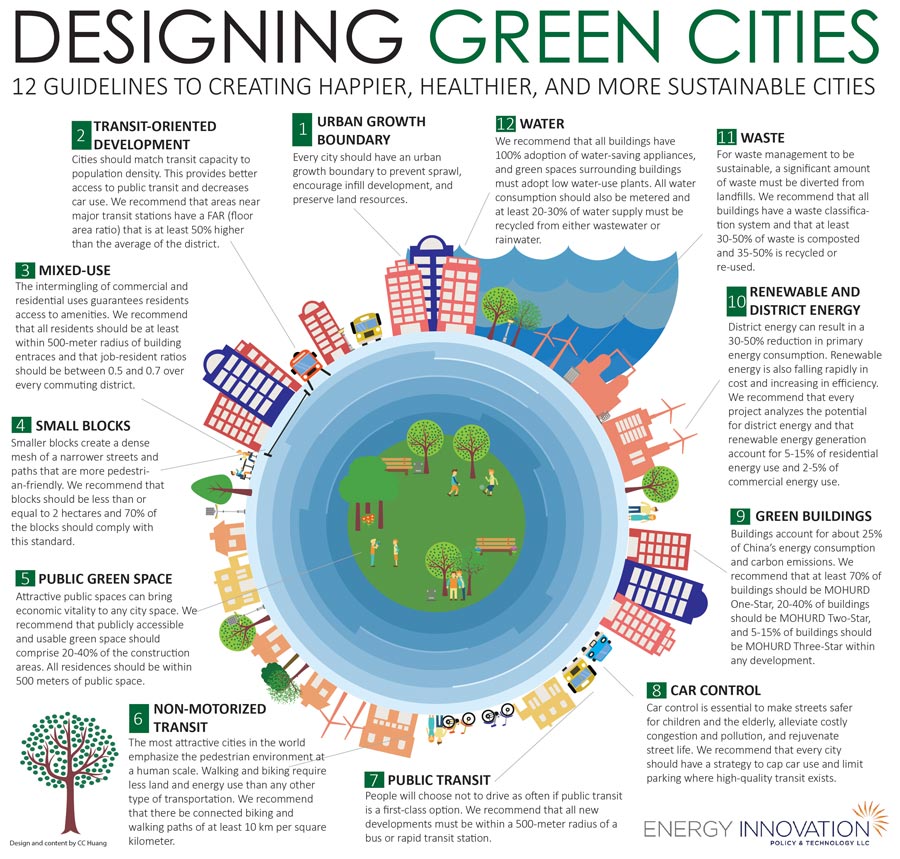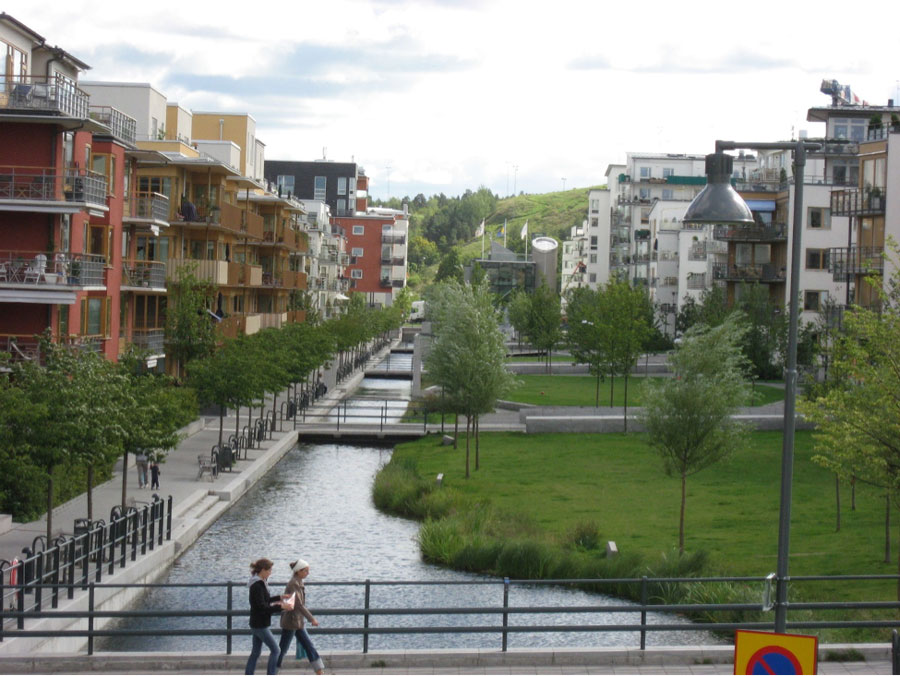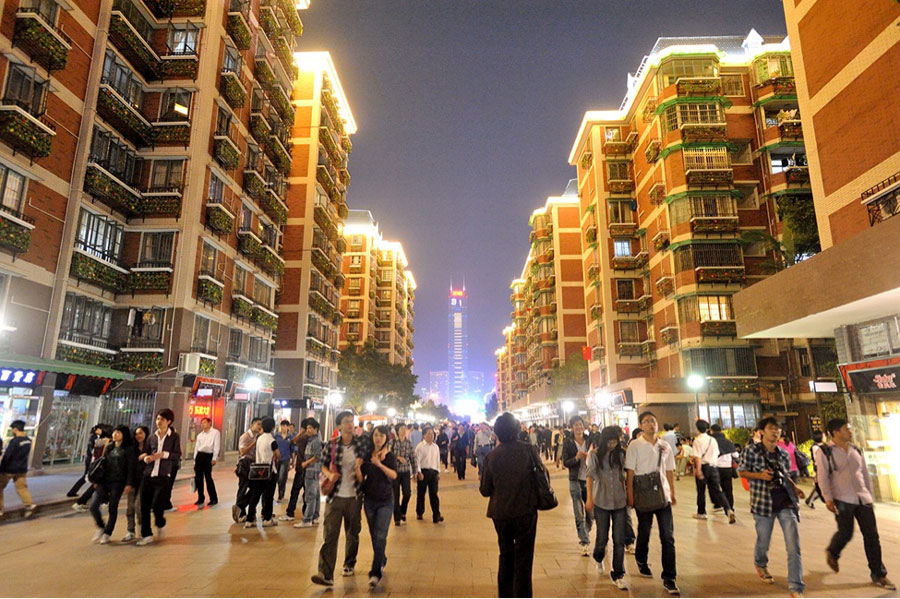Guiding Green and Smart Urban Development in China

Who will you meet?
Cities are innovating, companies are pivoting, and start-ups are growing. Like you, every urban practitioner has a remarkable story of insight and challenge from the past year.
Meet these peers and discuss the future of cities in the new Meeting of the Minds Executive Cohort Program. Replace boring virtual summits with facilitated, online, small-group discussions where you can make real connections with extraordinary, like-minded people.
In the lead up to last month’s historic Paris climate summit, China announced that it would “embark on a new pattern of urbanization.” With cities consuming three-quarters of the China’s energy, the fate of this initiative carries global significance.
What will China’s “new pattern of urbanization” look like? China Development Bank Capital, in partnership with Energy Innovation and Energy Foundation, recently introduced a set of guidelines to help define China’s new model for urbanization. The Green & Smart Urban Development Guidelines capture the most important lessons learned from global experience on how to build a sustainable city. These guidelines are in line with China’s new central government goals and designed with practicality as a priority to suit China’s rapid urbanization.
Every city can be green and smart. The 12 Green Guidelines focus on the importance of basic land-use and infrastructural upgrades such as public transit, renewable energy, and water efficiency. The Six Smart Guidelines look at how smart technologies can optimize these urban systems. While few cities have truly explored the full integration of both green and smart, our research shows that it will be a necessary integration for leading cities in the 21st century. The Green & Smart Guidelines also come with two with comprehensive case studies – Hammarby in Stockholm and the Pearl District in Portland.
The 12 Green Guidelines are based on the principle that a few key actions taken by urban planners are critical in creating environmentally, economically, and socially thriving cities. The graphic above explains our approach in incorporating good policy design principles into each of the 12 Green Guidelines in order to ensure they are beneficial, measureable and practical. Designed as a tool for cities, the guidelines also provide quantitative benchmarks to help urban planners and others in city government fulfill the criteria.
For the Six Smart Guidelines, we look at the potential role for smart technologies in further advancing these social, economic, and environmental benefits. Many of these smart technologies have proven business models and payback periods, such as smart parking or building management systems. Applied innovatively, these technologies can increase efficiency and provide a range of benefits. For example, sensors in Barcelona’s irrigation system are helping the city more effectively care for its greenery while making money back through water savings. Smart technologies can also improve public services: cities like Stockholm are using advanced internet platforms to allow residents to register for school, scan radon gas levels, and even book weddings.
What do these principles look like in action? Take the example of the Liuyun Xiaoqu district in Guangzhou. In the place of roads, the neighborhood developed extensive walking and cycling paths. Even as vehicle ownership has risen in the city, the neighborhood has instituted car control policies, creating car-free sections of the development to protect the pedestrian culture. Here the importance of interactions between different guidelines is visible: the lack of cars does not hinder Liuyun Xiaoqu’s residents because of the introduction of mixed-use zoning. The ground floor of buildings that were formerly just apartment blocks has been converted into a wide range of shops which are always bustling with customers. Because such a wide range of goods and services is available within walking distance, residents can live a high-quality life without depending on cars.
The social, economic, and environmental benefits of the Green & Smart Guidelines are multiplied when all of the principles are applied together. A tour of one of the most sustainable developments in the world, the Pearl District in Portland, provides Chinese cities with an example of what such comprehensive sustainable development can look like. Before developing, both districts set environmental goals covering all critical elements of sustainable urban form, transportation, and energy & resources as outlined in the 12 Green Guidelines. By baking sustainability into their urban planning, the Pearl District made it part of its identity and ensured that all development would comply with the initial goals.
On top of the critical foundation of sustainable urban form and transportation, promoting non-motorized transit and public transit like Liuyun Xiaoqu, the Pearl incentivized new development to embrace the latest green technology. This vision materialized across the district and is best exemplified in one micro-neighborhood, the Brewery Blocks. This set of seven blocks is composed of all LEED certified buildings. The certification was achieved through the innovative incorporation of technology into the development: solar PV arrays line the façade of some buildings, while another hosts a district cooling facility providing cooling for the all the blocks, and all boast low-flow water fixtures for maximal water efficiency.
The Pearl’s sustainable redevelopment in line with the Green & Smart Guidelines has brought a host of benefits. The density of the district has quadrupled while easy access to parks and public transit allows for a high quality of life in the area. In a 2008 survey of Pearl residents, three quarters of residents said they drove less since moving to the Pearl; 58 percent said they usually walk, bike, or take transit to work. The district’s economy is also flourishing, driven by an influx of young, creative professionals. Between 1994 and 2010, job growth increased by 54 percent, average salary increased by 41 percent, and land market value increased by 690 percent, inflation adjusted.
There has been immense interest in China to set in motion sustainable urbanization patterns. We hope that the Green & Smart Guidelines and accompanying case studies can offer clarity on the path forward for local governments and urban developers. This is the moment for China to capitalize on a critical opportunity to make its cities ‘great’ through green and smart urban growth.
About the Authors:
 Lili Pike is an Urban Sustainability Fellow at Energy Innovation in San Francisco. Her work at Energy Innovation focuses on raising awareness on the imperative of sustainable design principles. She is a graduate of Harvard University where she majored in Social Studies, with a minor in Energy & Environment, and a citation in Mandarin. She wrote an honors thesis on eco-city development in China and South Africa.
Lili Pike is an Urban Sustainability Fellow at Energy Innovation in San Francisco. Her work at Energy Innovation focuses on raising awareness on the imperative of sustainable design principles. She is a graduate of Harvard University where she majored in Social Studies, with a minor in Energy & Environment, and a citation in Mandarin. She wrote an honors thesis on eco-city development in China and South Africa.
 CC Huang is a Policy Analyst for Energy Innovation’s Urban Sustainability program area. Prior to joining Energy Innovation, she worked at Lawrence Berkeley National Laboratory on international best practices of energy governance. She has also worked with the Natural Resources Defense Council in their Beijing office. CC received an MPA in Economics and Public Policy from the Woodrow Wilson School at Princeton University with a certificate in Science, Technology, and Environmental Policy. She also graduated magna cum laude with a B.A. from George Washington University in International Affairs with a minor in Philosophy. CC is fluent in Mandarin Chinese, having studied international affairs and philosophy at Peking University and was a recipient of the U.S. State Department’s Critical Language Scholarship.
CC Huang is a Policy Analyst for Energy Innovation’s Urban Sustainability program area. Prior to joining Energy Innovation, she worked at Lawrence Berkeley National Laboratory on international best practices of energy governance. She has also worked with the Natural Resources Defense Council in their Beijing office. CC received an MPA in Economics and Public Policy from the Woodrow Wilson School at Princeton University with a certificate in Science, Technology, and Environmental Policy. She also graduated magna cum laude with a B.A. from George Washington University in International Affairs with a minor in Philosophy. CC is fluent in Mandarin Chinese, having studied international affairs and philosophy at Peking University and was a recipient of the U.S. State Department’s Critical Language Scholarship.
Discussion
Leave your comment below, or reply to others.
Please note that this comment section is for thoughtful, on-topic discussions. Admin approval is required for all comments. Your comment may be edited if it contains grammatical errors. Low effort, self-promotional, or impolite comments will be deleted.
Read more from MeetingoftheMinds.org
Spotlighting innovations in urban sustainability and connected technology
Middle-Mile Networks: The Middleman of Internet Connectivity
The development of public, open-access middle mile infrastructure can expand internet networks closer to unserved and underserved communities while offering equal opportunity for ISPs to link cost effectively to last mile infrastructure. This strategy would connect more Americans to high-speed internet while also driving down prices by increasing competition among local ISPs.
In addition to potentially helping narrow the digital divide, middle mile infrastructure would also provide backup options for networks if one connection pathway fails, and it would help support regional economic development by connecting businesses.
Wildfire Risk Reduction: Connecting the Dots
One of the most visceral manifestations of the combined problems of urbanization and climate change are the enormous wildfires that engulf areas of the American West. Fire behavior itself is now changing. Over 120 years of well-intentioned fire suppression have created huge reserves of fuel which, when combined with warmer temperatures and drought-dried landscapes, create unstoppable fires that spread with extreme speed, jump fire-breaks, level entire towns, take lives and destroy hundreds of thousands of acres, even in landscapes that are conditioned to employ fire as part of their reproductive cycle.
ARISE-US recently held a very successful symposium, “Wildfire Risk Reduction – Connecting the Dots” for wildfire stakeholders – insurers, US Forest Service, engineers, fire awareness NGOs and others – to discuss the issues and their possible solutions. This article sets out some of the major points to emerge.
Innovating Our Way Out of Crisis
Whether deep freezes in Texas, wildfires in California, hurricanes along the Gulf Coast, or any other calamity, our innovations today will build the reliable, resilient, equitable, and prosperous grid tomorrow. Innovation, in short, combines the dream of what’s possible with the pragmatism of what’s practical. That’s the big-idea, hard-reality approach that helped transform Texas into the world’s energy powerhouse — from oil and gas to zero-emissions wind, sun, and, soon, geothermal.
It’s time to make the production and consumption of energy faster, smarter, cleaner, more resilient, and more efficient. Business leaders, political leaders, the energy sector, and savvy citizens have the power to put investment and practices in place that support a robust energy innovation ecosystem. So, saddle up.









0 Comments